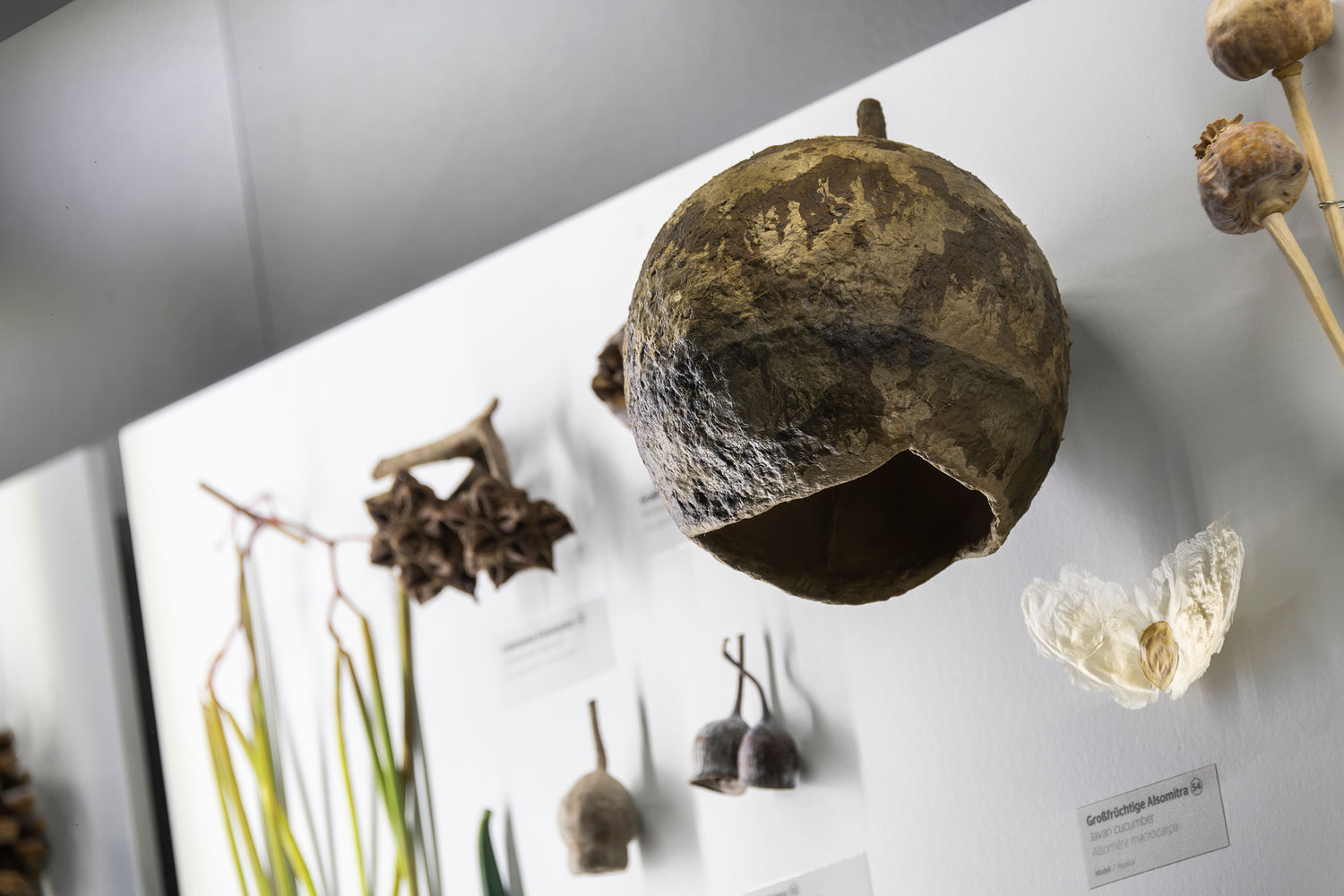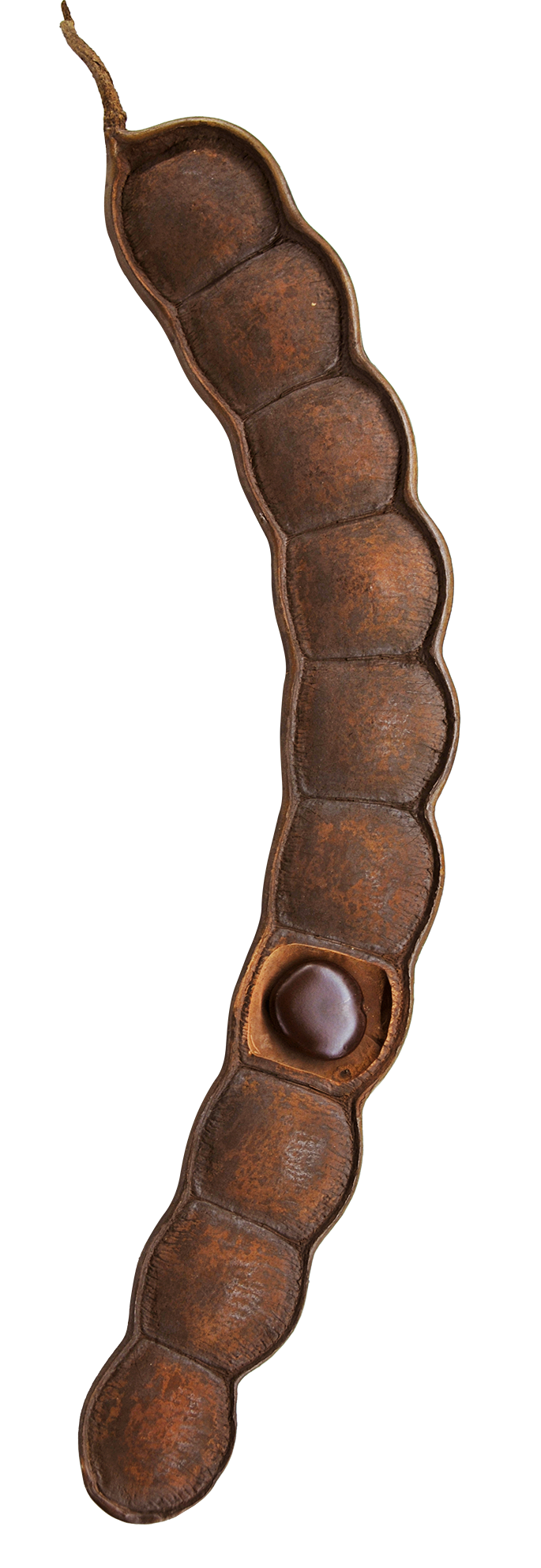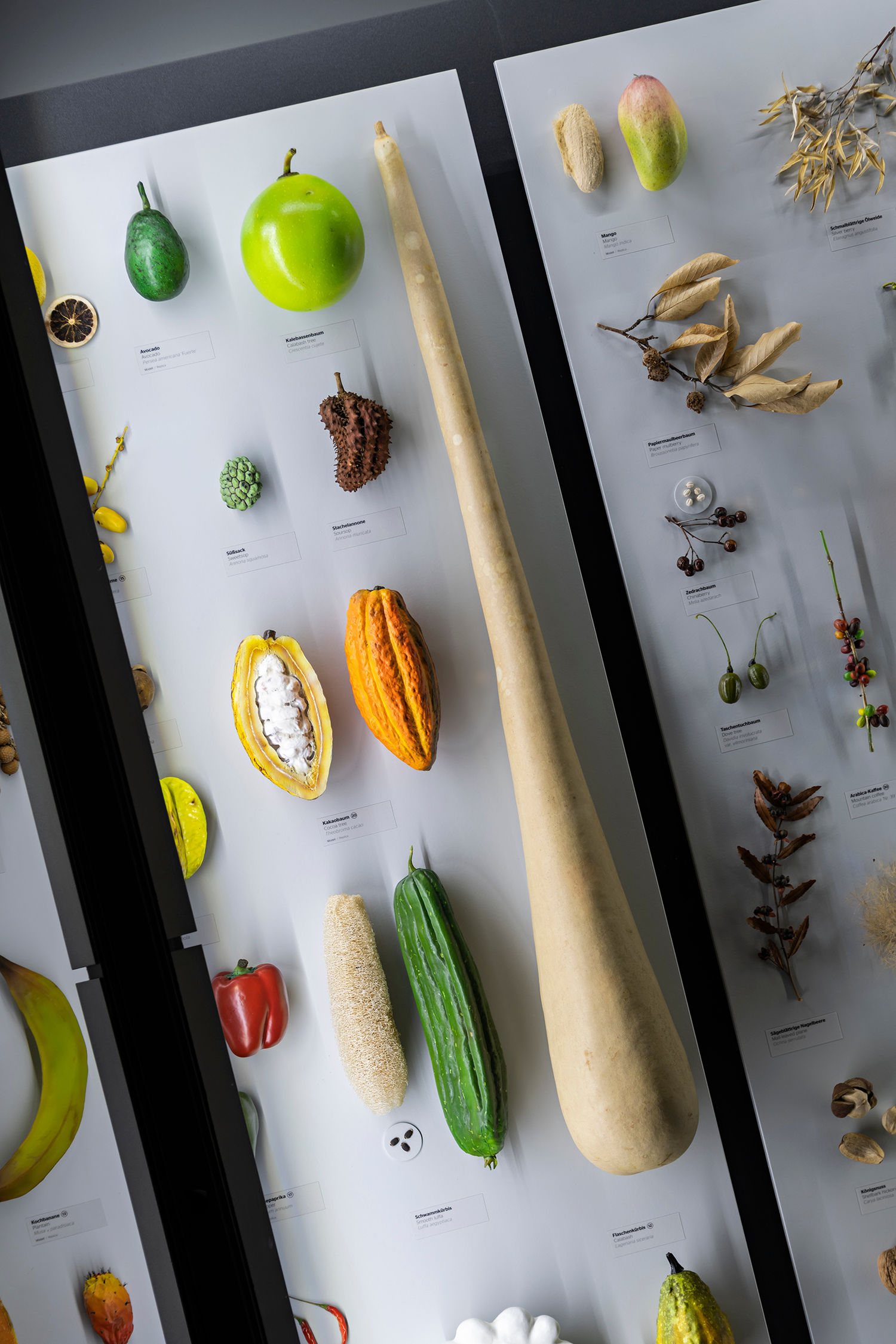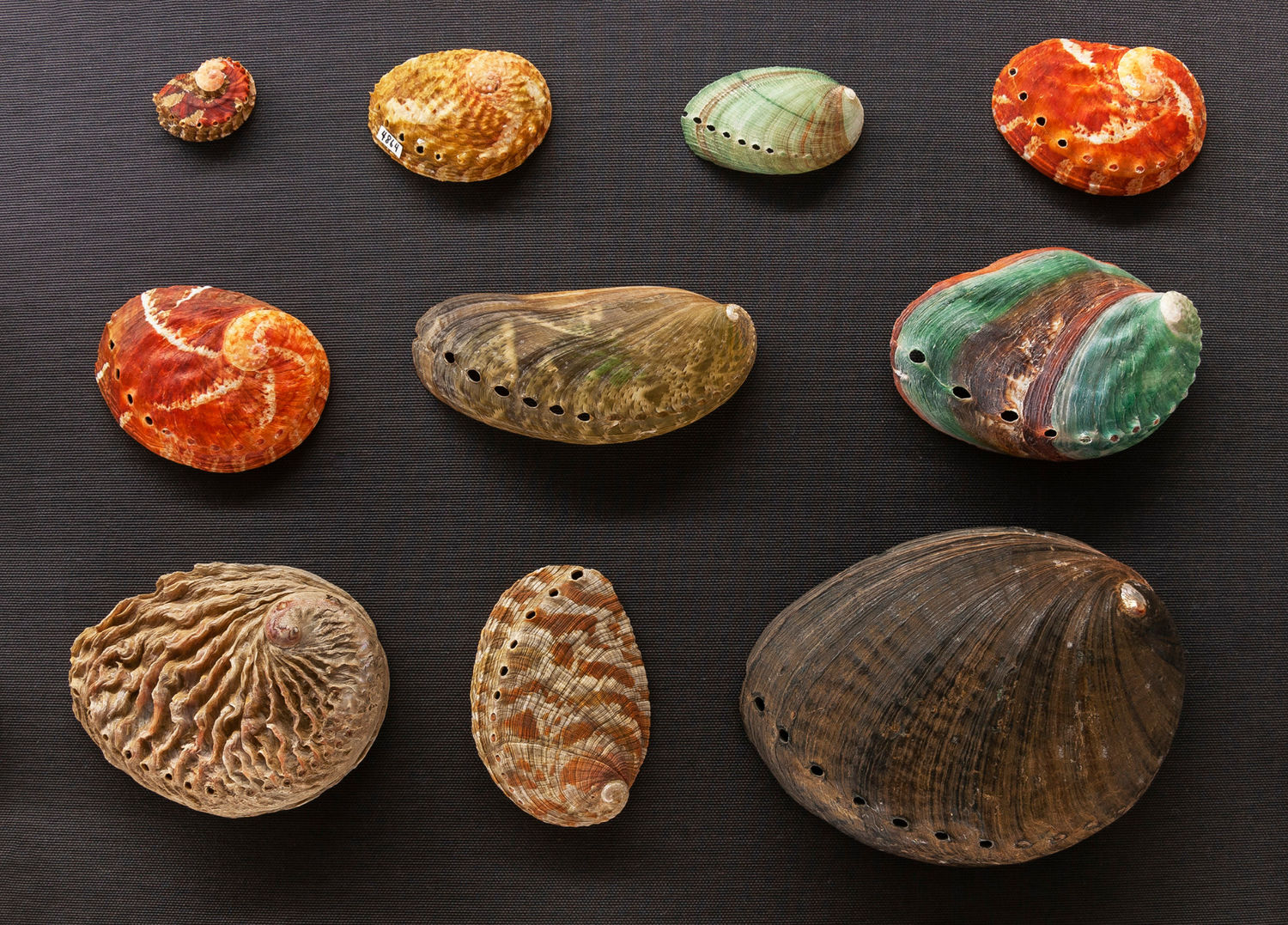
Like no other room, the „Form“ display presents natural objects, not selected systematically by order, but for their shape. The variety of forms appearing in nature is seemingly inexhaustible — mussels, whose shells are delicately laid in folds or formed in massive cubes, snails that decorate their shells with the shells of other snails, crabs with specialized legs for swimming, others with impressively powerful claws. There are starfish that look like flowers and sea urchins whose quills appear so fragile we forget how dangerous they are. The variety of skull shapes and sizes, from the giant elephant to the smallest of bats, illustrates how natural form always develops in service of the organism. Whether aquatic or terrestrial, every animal and every plant bears evidence of the process of adaptation through evolution, nature’s continual response to the challenges of life in a perpetually changing environment.
The zoologist and philosopher Ernst Haeckel (1834—1919) conducted intensive studies of the symmetries of living nature. His book of illustrations Art Forms in Nature, published at first serially between 1899 and 1904, became so popular that it influenced the art and architecture of the early 20th century with its depictions of Radiolaria and medusae. The exhibition allows visitors to compare the crustaceans and echinoderms with his engravings.
It is never wise to store an apple or a banana for too long. Over time, it ferments, attracting not only mice and flies, but fungi, as well. To preserve these fruits for exhibition in the long term, casts of them are made instead. That, in turn, presents the challenge of creating a natural surface, color, and occasionally depth. An opened peach reflects light even from its deeper flesh. While most cones, grass seeds, Banksia follicles, and coconut drupes are easy to display, the cones of an araucaria from the gardens of Wiesbaden's Kurpark pose a particular challenge to the taxidermist, requiring creative solutions. Thanks to the use of polyethylene glycol (PEG), some organic structures can be stabilized first, then colored. As the cone grows on the tree it undergoes continual transformation, so the taxidermist selects and presents distinct stages of its development. The variety of shapes of fruits and seeds is immeasurable. Each plant has found unique solutions to widely disperse its seeds, while remaining itself in place. Some leave the job of spreading to the animals, others to the wind and water, and some have special strategies for movement. These various solutions allow plants to overcome quite considerable distances and ensure their continued existence. The burst of the seeds released from impatiens along the forest path is as much an example of this as the tumbleweeds that roll through the streets of western films dispersing their ripe seeds.











Museum Wiesbaden offers a variety of programs for all ages, from guided tours to workshops for preschools and schools, to teacher training and programs for students, private groups, or families with children.